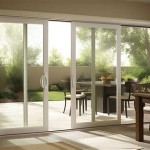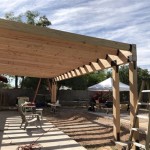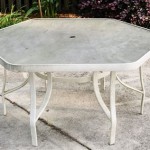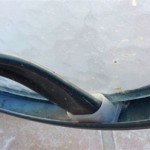Replacement Patio Screen Door Wheels: A Comprehensive Guide
Patio screen doors provide a vital connection between indoor and outdoor living spaces, offering ventilation, natural light, and a barrier against insects and debris. A properly functioning screen door enhances the usability and enjoyment of a home. Among the most crucial components of a well-functioning screen door are the wheels or rollers. These small, yet critical parts enable the door to glide smoothly along its track. When these wheels fail, the entire screen door operation is compromised, leading to difficulty in opening and closing, potential damage to the frame and track, and overall frustration.
The need for replacement patio screen door wheels arises from various factors, including normal wear and tear, exposure to environmental elements, and improper maintenance. The constant rolling action, combined with the weight of the door, gradually degrades the wheel material. Exposure to sunlight, rain, and extreme temperatures can further accelerate this process, causing the wheels to become brittle, cracked, or seized. Lack of lubrication and the accumulation of dirt and debris in the track also contribute to premature wheel failure. Recognizing the signs of failing wheels and understanding the replacement process is essential for maintaining a functional and aesthetically pleasing patio screen door.
Identifying Worn or Damaged Patio Screen Door Wheels
The process of identifying worn or damaged patio screen door wheels is crucial for timely replacement and preventing further damage to the door and its track. Several telltale signs indicate that replacement is necessary. One of the most obvious indicators is difficulty in opening and closing the door. If the door requires excessive force to move, sticks, or feels rough during operation, it is likely that the wheels are worn or damaged. This resistance can also manifest as a grinding or scraping sound as the door is moved.
Visual inspection of the wheels themselves is another important step in the diagnostic process. Look for cracks, chips, or flat spots on the wheel surface. These imperfections disrupt the smooth rolling action and can cause the door to jump off the track. Examine the wheel bearings for signs of rust or corrosion. If the bearings are seized or excessively loose, the wheels will not rotate properly. In some cases, the entire wheel assembly may be visibly broken or detached from the door frame. Uneven wear on the wheels, where one side is significantly more worn than the other, can also indicate misalignment or issues with the track. Observing the door's movement can provide further clues. If the door sags or leans to one side, it could be due to one or more wheels being unable to support the weight properly. By carefully observing both the operation and the physical condition of the wheels, one can accurately assess the need for replacement.
Choosing the Right Replacement Patio Screen Door Wheels
Selecting the correct replacement patio screen door wheels is paramount for ensuring the smooth and reliable operation of the door. A wide variety of wheels are available on the market, and choosing the wrong type can lead to fitting problems, poor performance, and even damage to the door frame or track. Several factors must be considered when making this selection, including wheel size, material, bearing type, and the specific door manufacturer and model.
The size of the wheel is a critical dimension. The diameter and width of the replacement wheel must match the original wheel to ensure proper fit within the track. Measure the existing wheel carefully, or consult the door manufacturer's specifications to determine the correct size. The material of the wheel also plays a significant role in its durability and performance. Common materials include nylon, steel, and various types of plastic. Nylon wheels are generally quieter and provide a smoother rolling action, while steel wheels offer greater strength and resistance to wear, particularly in heavier doors. The bearings within the wheel are also a crucial consideration. Ball bearings provide smoother and more efficient rotation compared to plain bearings. Sealed bearings offer additional protection against dirt and moisture, extending the lifespan of the wheel. It is also crucial to determine the mounting style of the wheel. Some wheels are designed to be inserted into a slot on the door frame, while others are mounted with screws or rivets. Matching the mounting style ensures a secure and proper installation.
Furthermore, paying attention to the door manufacturer and model is essential. Some door manufacturers use proprietary wheel designs that are not universally compatible. Consulting the door manufacturer's website or contacting their customer service department can help identify the correct replacement wheel for a specific door model. Generic replacement wheels are available, but it is important to verify that they are compatible with the door's track and mounting system. By carefully considering these factors, one can select the appropriate replacement patio screen door wheels and restore the smooth operation of the screen door.
The Process of Replacing Patio Screen Door Wheels
Replacing patio screen door wheels is a manageable task that can be accomplished with basic tools and a systematic approach. While the specific steps may vary slightly depending on the door's design, the general procedure involves removing the old wheels, installing the new ones, and adjusting the door for proper alignment. Before beginning the replacement process, gather the necessary tools and materials, including a screwdriver (usually Phillips head), a putty knife or similar flat tool, a lubricant (such as silicone spray), and the correct replacement wheels. Safety glasses are recommended to protect the eyes from debris.
The first step is to remove the screen door from its track. This typically involves lifting the door upwards to disengage the wheels from the track. In some cases, the door may need to be tilted or slightly pried loose. Once the door is removed, lay it flat on a stable surface. Locate the screws or rivets that secure the old wheels to the door frame. Use a screwdriver to remove the screws. If the wheels are held in place with rivets, they may need to be drilled out carefully. Once the fasteners are removed, the old wheels should be easily accessible. Clean the area around the wheel housing to remove any accumulated dirt or debris. This will help ensure a smooth installation of the new wheels.
Next, install the new patio screen door wheels. Align the new wheels with the wheel housing and secure them using the original screws or new screws of the correct size. If rivets were used previously, consider using screws and nuts for a more secure and easier-to-remove option in the future. Ensure that the screws are tightened securely, but avoid over-tightening, which can damage the wheel or the door frame. Once the new wheels are installed, lubricate them with a silicone spray to promote smooth rotation. Carefully lift the door back onto the track, aligning the wheels with the track grooves. Test the door's operation, ensuring that it slides smoothly and easily. If the door is not aligned properly, adjust the wheel height by turning the adjustment screws located on the wheel housing. This allows you to raise or lower the door slightly to achieve proper alignment within the track. Repeat this adjustment process until the door moves smoothly and evenly along the entire length of the track.
Regular maintenance of patio screen door wheels can significantly extend their lifespan and prevent premature failure. This includes periodic cleaning of the track and wheels to remove dirt, debris, and other contaminants. A vacuum cleaner with a brush attachment can be used to remove loose debris from the track. A damp cloth can be used to wipe down the wheels and the track, removing any stubborn dirt or grime. Lubricating the wheels with a silicone-based lubricant every few months helps to maintain smooth operation and prevent corrosion. Inspecting the wheels regularly for signs of wear or damage allows for early detection of potential problems and timely replacement. By following these simple maintenance practices, one can ensure the long-lasting performance and functionality of patio screen door wheels.

How To Replace Sliding Screen Door Rollers W A Driver

Patio Screen Door Wheels Window Screens Now

The Right Roller For Your Patio Screen Door Pca S

All Brands Sizes Styles Patio Door Roller Screen Wheel Master Window Parts

How To Replace Screen Door Rollers Rolltrak
Patio Screen Door Roller Assembly Parts Biltbest Window
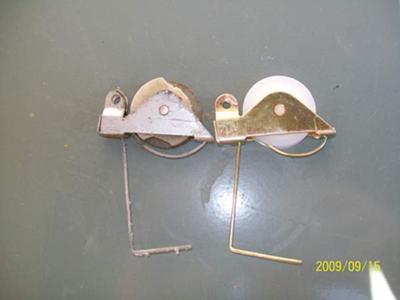
Screen Door Rollers Getting Them Removed

Prime Line White Plastic Sliding Screen Door Roller For Andersen Doors 2 Pk B 684 At Tractor Supply Co

Replacing A Sliding Screen Door Roller

Prime Line 1 In Steel Screen Door Roller 2 Pack B 702 The Home Depot
Related Posts

